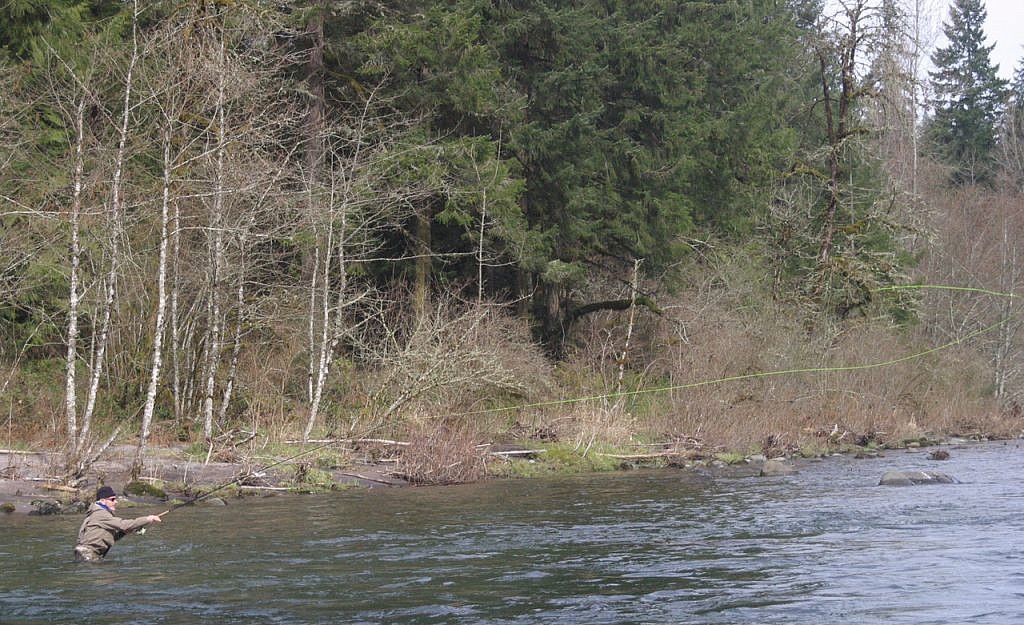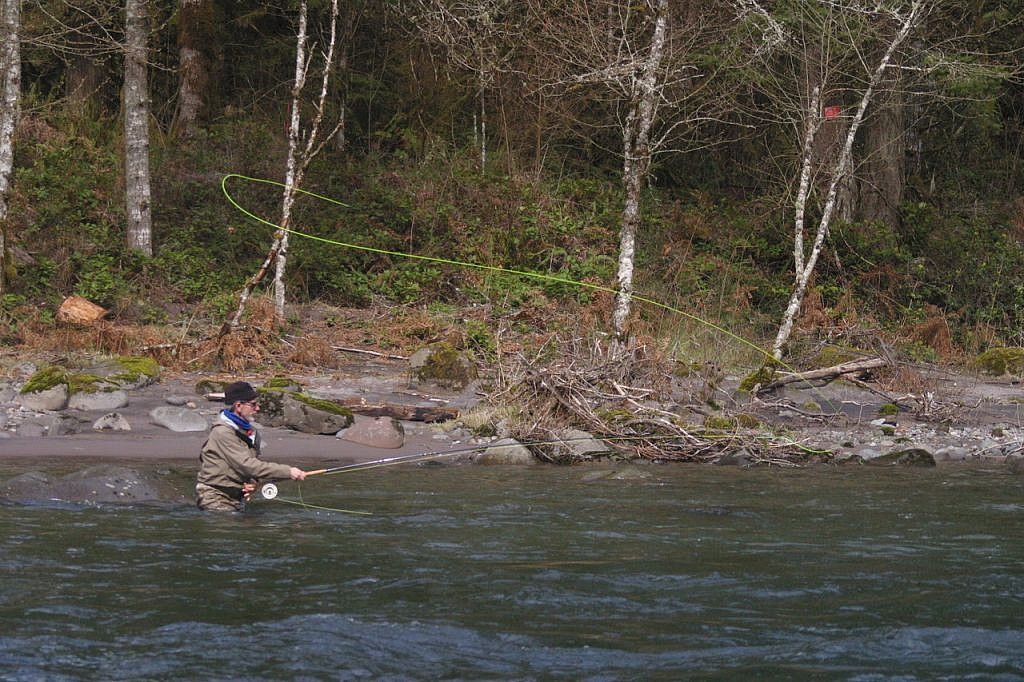
by Scott Sadil
I’m pretty sure Rafael Gonzales and his crew at the Magallanes Fly Fishing Lodge, in Chilean Tierra del Fuego, aren’t going to be very happy with me if I show up waving a two-hander like an old man with a pole pruner trying to finally get after that row of black locust he’s neglected all these years.
It’s not a matter of inexperience. Over the past 25 years I’ve managed to fashion a reasonably competent two-hand game, an assortment of casts sufficient to deal with the rivers I fish and the fish I occasionally find there.
But lately, with local steelhead numbers in the tank, I haven’t spent nearly as much time as I used to with a double-hander, or what’s regionally known as a Spey rod, in my mitts, except when dunking egg patterns for winter fish along the edges of small coastal creeks, or whaling away heaving overhead casts into the Baja Pacific surf.

Plus, in case you haven’t noticed, the development of modern so-called Spey lines has followed a wide variety of tangents. Where, before, all you really needed to do was find the appropriately weighted line for whatever two-hand rod you favored, you now have to wade through a morass of line styles and nomenclature, a complexity of technical folderol that can make even a seasoned angler like myself blush with uncertainty, and easily befuddle, if not actually stymie, the two-hand initiate.
Long belly? Short belly? Scandi this? Skagit that? Overhead? Underhand? Maxi? Mini?
What’s a poor fellow to do?
My advice, simply enough, is to seek the services of a pro. The downside to this obvious strategy is that even guides and shop gurus have their prejudices—or even financial self-interests—and they can easily point you in a direction that might not necessarily fit your needs, desires, or temperament. If, on the other hand, you have a chance to see said hotshot cast, or maybe present a clinic or the like at a local show or Spey clave, and you like what you see, by all means get the number and call.
I wish I were as quick to take this advice as to give it.

Still, the good news, for me, is that I happen to be neighbors with Tom Larimer, over the years one of the preeminent Spey casters, guides, casting instructors, and designers of both rods and fly lines in the entire Northwest. Recently, Larimer took an executive position with St. Croix Rods—but, as is his nature, he generously gave me an entire spring evening’s worth of on the water instruction, the sort of hands-on coaching that can make a world of difference for a seasoned hacker like me.
I’ll spare you the details. All I need say is that, in a short while, Tom unlocked a couple of basic principles in two-hand casting that had somehow escaped my notice over the years, while at the same time helping me understand the efficacy of just the sort of line I was going to need if I wanted to have any chance at all standing up to those notorious Tierra del Fuego winds.
I should also mention that, during the course of the lesson, we saw three steelhead landed along the gravel bar just upstream; one was a big bright hen caught by a guy nymphing, the other two were caught by guys casting hardware.

“Typical Spey casters,” said Tom. “We’re down here practicing casts while there’re fish in the creek.”
Seeing fish caught made it easier, anyway, to return to the river for a number of practice sessions. It’s not rocket science, but if you’ve made any adjustments at all, you do want to try to re-groove your stroke, build up a little new muscle memory.
Not everybody goes for this kind of sport—cast and swing, cast and swing—but there’s a meditative quality to it that makes it easy to pass the hours on a mild, late-winter day. Once you let the cast go, and the fly begins to hunt, there’s not a lot to do but pay attention and wait. With luck you find a rhythm, a pace anglers younger than I am are often unable to sustain without outside help. I don’t condone it but I get it—the long tradition of anglers who, to paraphrase something McGuane once said, like to get a leetle loaded and cast for sea-run fish.
Gray’s angling editor, Scott Sadil, recalls with fondness the 15-foot, ten-weight Winston with which he began his long, erratic voyage through the currents of two-handed rods.
